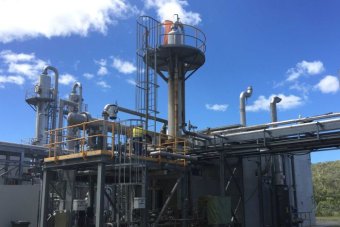The role of clean coal technologies in reducing emissions
Updated
The term 'clean coal' has been high on the political agenda in the wake of widespread energy black-outs in South Australian recently.
For opponents, clean coal is derided as oxy-moronic.
But the Federal Government argues it's a legitimate way of maintaining energy security at times when intermittent renewable sources cannot.
The Australian Science Media Centre engaged three prominent scientists and researchers in the field for a briefing on clean coal and whether it was a pipe dream or reality.
The scientists agreed there was a need to look at all electricity sources and assess their ability to be incorporated into existing systems.
They also agreed that the language and terminology used by politicians, proponents and opponents failed to encourage mature, scientific discussions.
"We used to say technology neutral, now we say technology agnostic" said Dr Ian Magill, an associate professor in the School of Engineering at Melbourne University.
"It's an important about the range of options, and the best options to take us forward.
"There's a real sense of urgency here. We don't have time to muck around if we're going to address climate change and that tends bring the focus to what we know works."
High efficiency low emissions (HELE) power plants
HELE power plants come in many different forms and can use a variety of fuels like coal, gas, a combination of both or other sources like biomass.
There are many technological aspects to how HELE power plants reduce not just carbon dioxide but also photo-chemical smog pollutants.
However, the basic principle that applies to most of them is that higher efficiency is the basis of the lower emissions.
"What role can HELE play? In many ways we're already seeing it in China at the moment where they've been closing down their old, highly inefficient, often quite expensive to run coal plants," Dr Magill said.
"They replacing them with new built super-critical rather than ultra super-critical coal fired power stations.
"But the most effective is HELE incorporated with carbon capture and storage (CCS) and we haven't seen much of an uptake of that in the power sector yet, to give us a real idea of the role it can play."
Dr Magill said high efficiency was playing an increasing role internationally.
"It's important to note that even HELE coal plants don't approach the efficiencies we can get with the most modern, combined cycle gas technologies," he said.
"Those plants can have half the emissions of the lowest emissions, non carbon capture and storage coal plants."
Carbon capture and storage for emissions reduction
Carbon capture and storage (CCS) is another emissions reduction method that causes divisions.
It is expensive and after years of research it is still yet to be widely deployed on energy production plants.
Professor Peter Cook has been involved in the area for decades, and is a professorial fellow at Melbourne University.
He said CCS was achieving emissions reductions in the wide-spread use in industrial processes, which produced up to 25 per cent of global carbon dioxide emissions.
"We need to start integrating CCS into our whole energy and carbon reduction systems. It's not to stand there by itself, it has to be integrated," he said.
"I think people sometimes lose sight that really the strategy should be to reduce our emissions, not put particular technology in place.
"We shouldn't necessarily be talking about 100 per cent renewables - it's a matter of what we want to do to cut down on emissions in the most cost effective way."
Renewable energy prices down but integration problematic
Farmers across Australia have been adopting on-farm solar as a way to cut their costs and reduce their reliance on the power grid.
Meanwhile, data from a solar consultancy firm found December 2016 was a record investment month in renewable technology.
Despite the widespread adoption, Dr Magill said integration had been problematic.
"The growth of PV solar and renewables has really accelerated in the last few years as prices come down," he said.
"That's internationally as well as here. But one of the problems, as shown by the South Australian black out that was part of this, with the dispatchable renewables, which we can much more easily turn up and down, we haven't seen the cost reductions as in other places.
"Part of the challenge we face is the renewable technologies, where we've seen really significant cost reduction, are those which are more challenging to integrate [into existing energy grids]."
Come clean with public on costs to householders and investors
No matter what the future energy mix looks like, cleaning up the energy system will entail higher costs and the scientists all argued that should be made public.
"Clean energy costs, whether it's capture and storage or renewables for example, they're capital intensive," Dr Magill said.
"They're dominated by the costs of finance and the cost of finance, in the current environment, is dominated by risks.
"So when we hear discussions of investor uncertainty, or people not building things, or it's more expensive to build, it absolutely is the case it's what the present policy uncertainty has been creating."
"A warming world is a world, with greater renewable energy inputs, is going to mean management and affordability challenges."
Topics: mining-rural, mining-industry, electricity-energy-and-utilities, energy, alternative-energy, coal, perth-6000
First posted









